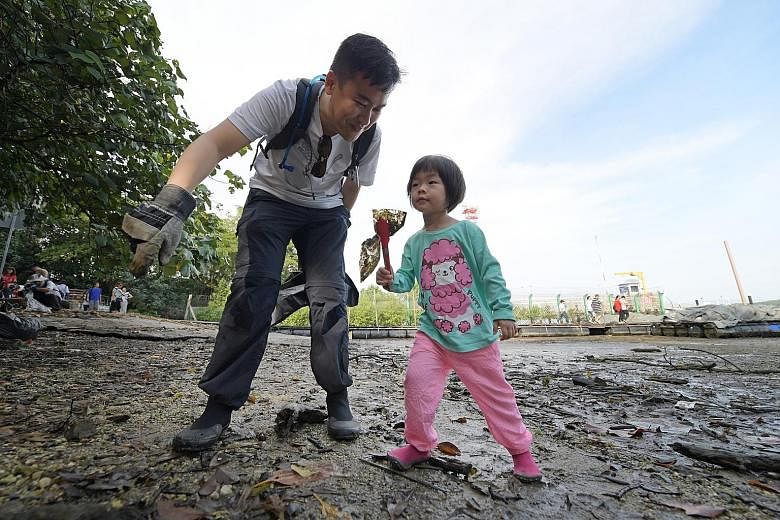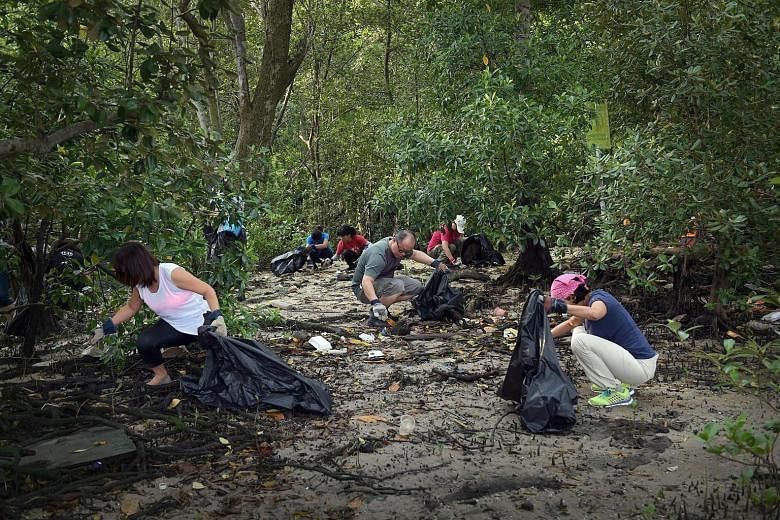The number 888 may be auspicious to some, but not for the 67 volunteers who dredged up rubbish from the Lim Chu Kang mangrove yesterday.
On the eighth day of Chinese New Year, they collected 888kg of rubbish from the mangrove as part of cleanup efforts organised by International Coastal Cleanup Singapore.
In various Chinese languages, the number eight sounds like the word "prosperity".
But there was nothing prosperous about the rubbish collected. It ranged from small items such as drinking straws and plastic cups, to larger items such as tyres, water drums and even a motorcycle helmet.
One of the organisers, Mr N. Sivasothi, said that while beaches at places such as East Coast Park are cleaned regularly, non-recreational areas such as the Lim Chu Kang mangrove receive less attention.
The group has been regularly cleaning the mangrove since 1992.
An earlier effort had turned up more than a tonne of rubbish.
In September and October last year, the group also picked more than 13,000kg of rubbish from coasts along the island.
Mr Sivasothi, 50, a senior lecturer with the biological sciences department at the National University of Singapore (NUS), said that mangroves in the region hold a wealth of biodiversity.
He said that "just looking around, I can see at least 12 species of trees" at the Lim Chu Kang mangrove, and, given previous efforts, he is hopeful that more will be done to protect them.
"Mangrove trees were planted at Pasir Ris," Mr Sivasothi said. "The mangrove at Sungei Buloh was turned into a nature reserve, and now that has been extended to Kranji. So I think it can be done."
Yesterday's cleanup drew a diverse crowd, from NUS students to visitors from as far away as India and Serbia.
The youngest volunteer was three-year-old Elizabeth Lim, who was there with her parents.
Her father, Mr Adrian Lim, said: "We feel it's important to let her get her hands dirty and expose her to the importance of protecting the environment early on."
The 40-year-old programme manager takes part in about four coastal cleanups a year. He said: "People should know that there's all this nature right in our backyard, but there's also all this trash."



